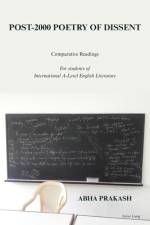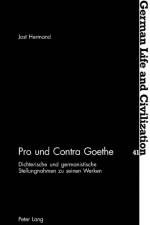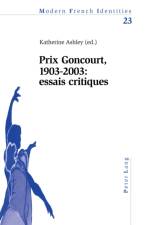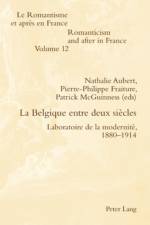- Visions of Alterity in Literature, Visual Culture, and New Media
av Timothy Mathews
687
«Alia Soliman's re-assessment of the motif of the doppelgänger moves it comprehensively into the twenty-first century and adds new dimensions to the figure. Here, through incisive readings, the double is brought to perspectives on ageing, the crisis of masculinity and, crucially, our digital condition. Soliman's book prompts vital questions about the literary, cultural and social work the double can do.» (Patrick ffrench, Professor of French, King's College London) «Alia Soliman's book focuses on aspects of the female double, the doppelgänger in Latin American literature, contemporary photography and in social media, making relevant contributions to scholarship. Considering the growing importance of the digital double and the implications of public image and self-perception, this publication presents an interesting link from the motif's literary past to its multi-mediated present.» (Gerald Bär, Professor of Literature and Cultural Studies, Universidade Aberta, Lisbon) «From the female double to digital doppelgänger trends, this book offers a topical investigation into issues pertaining to identity formation through the lens of the double. Emanating from the literary realm and into photography, film, and new media, the study reveals new and exciting engagements with the doppelgänger that span feminist, visual, and digital studies.» (Prof. Umberto Mondini, President, International Centre for Studies of Arts and Humanities, Rome) The book examines the doppelgänger persona's gradual shift to representations of the self as simulacrum and responds to changing conceptions of identity that celebrate the potentiality of alterity. Varied literary, visual, and digital narratives of the self showcase the doppelgänger as an increasingly image-based construction. The increasing visuality of the doppelgänger corpus engages with notions of exteriorisation, fragmentation, and the materialisation of unfulfilled possibilities, reflecting a sense of self that indulges in multiple realities and alternative lives. The literature of Jorge Luis Borges and Carlos Fuentes reveal the birth of multiple selfhoods that are rooted in temporality; Willem Hermans, José Saramago, and Denis Villeneuve put forth under-represented experiences of alienation and the remedial powers of the alter; contemporary photographic campaigns by Cornelia Hediger and François Brunelle and digital doppelgänger series such as «twin strangers» lead trends in visual culture and new media where the encounter between self and double is constructive, performative, and interactive. Delineating a structural change, the book proposes a paradigm shift that celebrates the female double, multiplicity, and visual and digital engagement and furnishes the reader with an expanded conception of the doppelgänger figure.




























